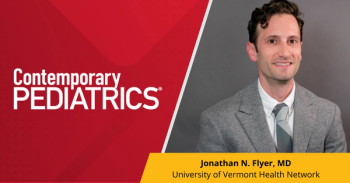
Community-level changes can impact health outcomes
Although improvements are modest, community interventions may help improve health care usage.
Improving neighborhood conditions in disadvantaged areas can help improve health outcomes, but these improvements may be modest and take a long time to see. Still, any improvement is a good improvement, concludes a new study.
The
The study was led by Deena J. Chisolm, PhD, Nationwide Foundation Endowed Chair in Health Equity Research, vice president of health services research at the Abigail Wexner Research Institute at Nationwide Children’s Hospital, and professor of pediatrics at The Ohio State University in Columbus. Chisholm says the study illustrates how pediatricians and pediatric health care systems can influence health at the community level by engaging activities that improve neighborhoods.
“We explored a multi-faceted community development program in which a pediatric hospital worked with a faith-based partner and many other community, business, and governmental stakeholders to address housing quality and availability, education, employment, community safety, and health,” Chisholm says.
Although the study did not explore the underlying causes of health care use, researchers instead compared health care use levels in neighborhoods enrolled in the Healthy Neighborhoods Healthy Families program to those that were not.
The
This study follows the interventions and improvements observed in neighborhoods that worked to make changes over the first decade of implementation, measuring success in terms of health care utilization rates.
The research team found that in the first decade since the Healthy Neighborhoods Healthy Families program was implemented, the number of emergency department visits in the intervention neighborhood decreased 20.8% compared to 16.1% in neighborhoods that did not introduce changes. Outpatient visits had less improvement—with a decrease of 12.7% in the intervention neighborhood compared to 12.2% in non-intervention neighborhoods. Length-of-stay (LOS) for inpatient cases had a larger difference, with LOS increasing by 28.9% in the intervention neighborhoods compared to an increase of 36.6% in non-intervention neighborhoods.
Whereas there were some changes in the intervention neighborhood, improvements were mainly in emergency department use, and these improvements were not very significant.
“Our findings suggest that a community development initiative may influence health care use for children and the neighborhood level,” the report notes. “However, the effect was modest, limited to emergency department visits.”
Some takeaways from the report include caution about expecting large-scale changes in neighborhood health outcomes that weren’t specifically targeted by program interventions. The research team assumed that broad neighborhood interventions would have an indirect impact on health care usage based on the cumulative negative effects of adverse childhood experience. This didn’t happen to the level researchers may have hoped, but the report also acknowledges that even modest changes are a step forward, and that these findings are early and small. Secondly, measuring this data is hard, the team notes.
“Identifying appropriate comparison communities required the use of geographic and statistical approaches leveraging multiple data sources, and, ultimately, our matches were still not perfect,” the research team notes. “The fact that the magnitude of the intervention effect differed when different comparator communities were used highlights the fact that the unique features that make neighborhoods ‘neighborhoods’ are unlikely to ever be fully controlled for in a research model.”
There is also some difficulty in gauging the true effect of these community level changes without randomized trials, the study notes. However, researchers also acknowledge that randomized trials also don’t really reflect the real world. These results must be viewed within the “big picture” and long-term goals, the team adds.
Community development interventions that come from hospital-community partnerships can help improve outcomes, namely in health care use, the report concludes. However, understanding how these interventions specifically relate to outcomes requires a multidisciplinary approach, rigorous data collection and analysis, and patience. Chisholm says she hopes the study will encourage pediatricians to continue working with needy communities to create long-term changes.
“We hope that this study provides evidence to support expanded investment in addressing upstream, social factors that influence child health and well-being and that it encourages pediatricians to engage directly in improving the communities which they serve in creative ways,” she says. “We also hope that it encourages pediatricians to understand that neighborhood factors can matter for health and to consider such factors when developing treatment strategies.”
Reference
1. Chisolm D, Jones C, Root E, Dolce M, Kelleher K. A community development program and reduction in high-cost health care use. Pediatrics. 2020;146(2):e20194053. doi:10.1542/peds.2019-4053
Newsletter
Access practical, evidence-based guidance to support better care for our youngest patients. Join our email list for the latest clinical updates.









